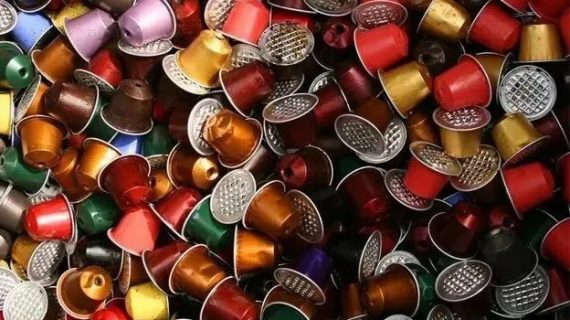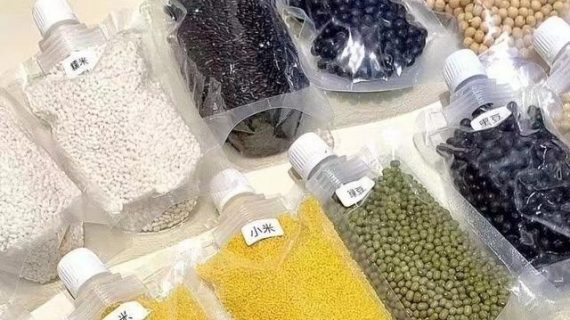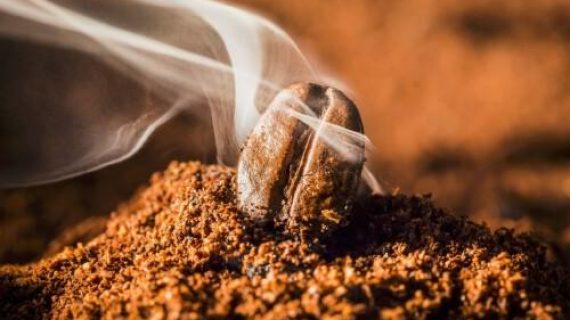Coffee classification
There are many categories of coffee, various nouns float around, and from time to time a full English name is given, which sounds clueless. It doesn’t matter, find a logical order to sort out, and all classifications will be easily solved. From a crop in the mountains to a beverage in our hands, coffee is roughly divided into five steps: planting, harvesting, processing, roasting, and extraction. All the classifications we have seen so far are basically based on different factors/methods in these steps. After understanding these five major steps in general, you can also understand various mysterious and mysterious “coffee classifications.”

Stage 1. Classification from the dimension of “planting”: The planting stage of Kenya, Yekashephaf, and Blue Mountain coffee has two major factors that affect coffee quality-the planting area (origin) and variety of coffee trees. So there are the following coffee classifications: 1. Based on the classification of origin,
① According to the country, it can be divided into: Kenyan coffee, Ethiopian coffee, Vietnamese coffee, etc., among which high-quality coffee usually comes from Panama, Kenya, Ethiopia and other Africa and Central and South American countries;

(Map of the world’s high-quality coffee-growing countries) ② Go deeper and can be divided according to the different producing areas of a country: For example, Sidamo and Yekasephine in Ethiopia, Blue Mountains in Jamaica, Sumatra in Indonesia, etc. And so on, these are classifications named after place names; going deeper, for enthusiasts and professionals, they will be classified and marked according to different estates. The above categories usually appear in specialty coffee shops, when the barista asks you what kind of coffee from a single origin to order. But be wary. Shops that usually claim to sell Blue Mountain Coffee are suspected of lying or vague concepts.
2. Classification based on coffee tree species: ① According to the large species, coffee can be simply divided into Arabica species and Robusta species. Under normal circumstances, the taste of Arabica is better than Robusta (actually, it cannot be generalized so simply). For example, we often hear a fast food chain claiming to use 100% Arabica coffee beans. But it should be noted that Arabica does not necessarily represent good coffee, or that most Arabica coffee beans are far from good quality.

② Refined Arabica classification: Under Arabica, there are countless subspecies and subspecies mating varieties, such as what we often hear: yellow bourbon, iron pica, Gexia and so on. ▷ Such “classification” introductions usually appear in the communication inquiries between baristas in some high-quality coffee shops and you. Stage 2. Sorting from the “harvest” dimension This stage includes picking and screening, and does not involve the “coffee sorting” that we usually hear. Stage 3. Classification from the “processing” dimension: solarization, dense processing, and water washing. The so-called processing refers to removing the outer peel, pulp, etc. of the cherry-shaped coffee fruit (also called Coffee Cherry) to obtain the yellow-green under the package The process of green coffee beans, which is the process of rough processing of coffee beans. Based on 3 common processing methods, we will hear these 3 “coffee classifications”:
① Sun exposure: A more natural processing method, most of which is very extensive exposure, but it can also be refined. The sun exposure in specialty coffee Beans are the result of fine processing. Usually, the fruit flavor of good sun-dried beans will be more prominent.

(Picture: Solar treatment method) ② Washing: The washing treatment method is more complicated, so I won’t repeat it for now. This treatment method is usually only used for high-quality coffee beans. Washed beans are characterized by a clean taste and bright fruit acid. .

(Picture: Washing method) ③ Honey treatment (also called semi-washing): Honey treatment combines the above two methods, and the taste of the obtained beans also has the characteristics of the above two methods. So, when you hear the barista say “washed beans” and “sun-dried beans” to you, including the hot “anaerobic fermentation” in recent years, you will understand what he is categorizing based on. But don’t forget to ask him to introduce the taste characteristics of this bean in more detail. Stage 4. Classification from the “roasting” dimension: shallow roasting, blending, and Italian French roasted coffee beans are heated by the roasting machine, and Maillard reaction occurs. From yellow-green green beans, we are in coffee shops and supermarkets. The brown beans seen in this process are called baking. For the roasting stage, these types of “coffee classifications” are usually heard. 1. Classified by baking degree: usually divided into shallow, medium and deep. Usually, the Italian roast and French roast we hear refer to the dark roasted coffee, and the City Roast is usually a medium roast. Deep roasting and medium roasting, the taste is mellow, more traditional “coffee aroma”; light roasting can better reflect the taste of coffee beans themselves, often with various fruity aromas, it is a veritable cup of “juice”. But if you don’t like sour drinks, you may not get used to it.

The color contrast between raw beans and cooked beans, the darker the roasted beans, the darker the color. 2. Classified by roasting object: it can be divided into single-origin coffee and blended coffee. ① Single-origin coffee (or single-origin beans): For high-quality green coffee beans, in order to maximize the display of its own characteristics-that is, the so-called regional flavor. We will not mix it with coffee from other varieties and growing countries for roasting and extraction. This is the so-called “single-origin coffee”. The most rigorous (narrowly) single-origin coffee, the information is specific to the variety, origin, estate, and processing method. The taste of “single-origin coffee” of different batches and years is not static, and there are surprises every year. ② Blended coffee (more commonly referred to as blended beans): Some coffee shops with a large production volume, such as Starbucks, Costa, etc., in order to ensure the stability of the taste of the coffee, and the guarantee of the quantity, they will use more in the roasting stage. Plant the way of blending beans (may be raw beans are put together and baked, or they may be baked and cooked beans are put together). Under normal circumstances, the coffee beans used in the blending are not of high quality, and deep roasting is used. However, for Italians who are experienced in blending coffee, they can always spell very delicious and good coffee. ▷ So if a friend asks you, do you like to drink single products? That usually refers to whether you like to drink coffee made from high-quality single-origin coffee beans. Stage 5. Classification from the dimensions of “extraction”: Italian, hand-made, and French. Some people say that baristas mainly do one thing at the bar-extraction. The so-called extraction is to grind the coffee beans into powder and then extract the aromatic substances in the powder with water to make a cup of coffee. Regarding this stage, the most common “coffee classification” terms are usually involved: 1. According to the method of extraction, the common categories are: ① espresso: use an espresso machine to press hot water to about 9 atmospheres to brew A cup of espresso is usually called espresso by us. If you want to make American, latte, or cappuccino, you must first have this small cup of espresso. Some people know that coffee made with a moka pot is also called espresso, but strictly speaking, this can only be a representative way for Italians to make coffee at home, not real espresso.

(Picture: a commercial espresso machine) ② Drip coffee: Use V60, Chemex and other extraction tools to extract a cup of coffee from coffee powder by pouring hot water under normal atmospheric pressure. This extraction method is also called hand brewed coffee. The electric American coffee machine at home also imitates this principle. That Italian machine extracts at high temperature and high pressure).

(Picture: Hand-pushed coffee is being made with a hand-pushed pot and Hario V60 filter cup) ③ Siphon coffee: Use a siphon pot to heat the extracted coffee.

(Picture: A siphon pot being heated, also called a Psiphon pot) ④ Infusion coffee: The representative of this extraction method is coffee made by French press pots and ice brewed coffee. The above types usually appear when the barista asks how you want him to make a cup of coffee for you, or when a friend asks you how to make your own coffee. The production tools include Aeropress, Mocha pot, French press pot, etc., so I won’t list them all. 2. Reproduction after extraction ① Black coffee: Whether it is black coffee or not, it has nothing to do with the extraction method, but it depends on what you did to the cup of coffee that you extracted. Coffee made directly with any of the equipment/methods I mentioned above is black coffee, Espresso is, Ristretto, which is more concentrated than Espresso, and hand brew is also. ② Coffee beverages developed on the basis of espresso coffee: After a cup of espresso coffee is made, you can choose to add milk products, water, or even wine and cocoa to create a different cup of coffee. Said Espresso-based drink. Under this category, you can develop: Americano, Latte, Cappuccino, Flat White, Piccolo, etc. What you hear most often at Starbucks, and even most coffee shops in the world, is this level of coffee classification. The picture below is the most intuitive explanation:


(Picture: If you are interested in the actual coffee above, you can enlarge this picture to see, the picture is from “World Coffee Map”) 3. The classification of capsule coffee and instant coffee is actually based on the coffee packaging you get in your hand And the brewing (non-brewing) method, and the packaging market concept (no derogatory meaning). ① The taste of capsule coffee will be closer to coffee produced by espresso machine. The advantage is that it eliminates human instability and makes it more convenient and consistent to produce. The disadvantage is that you will never feel the changes and surprises between one cup and another, and no one will make coffee capsules with the best quality coffee beans.

(Picture: Capsule coffee with different flavors from a major factory) ② Instant coffee is an extract made after a cup of coffee is dried. You can hardly taste any natural flavor of coffee in a cup of instant coffee. So some people say: instant coffee is not coffee.









